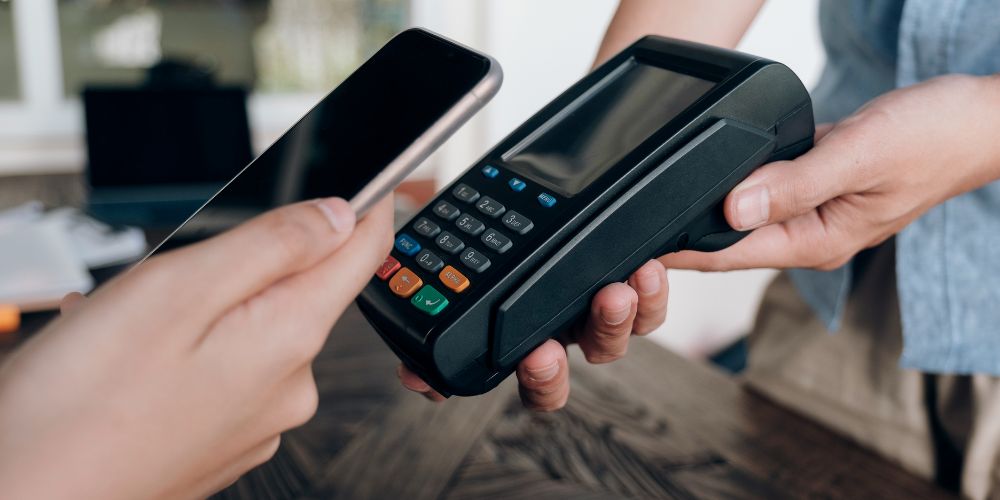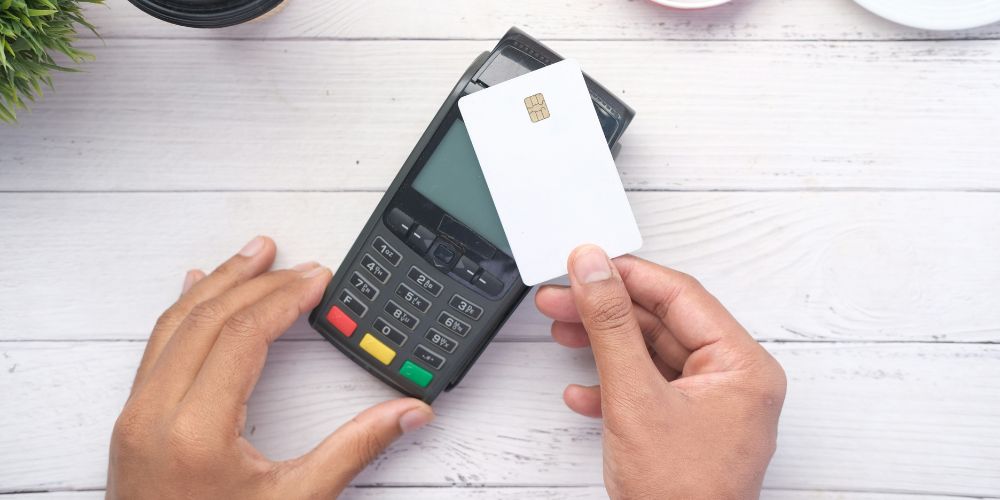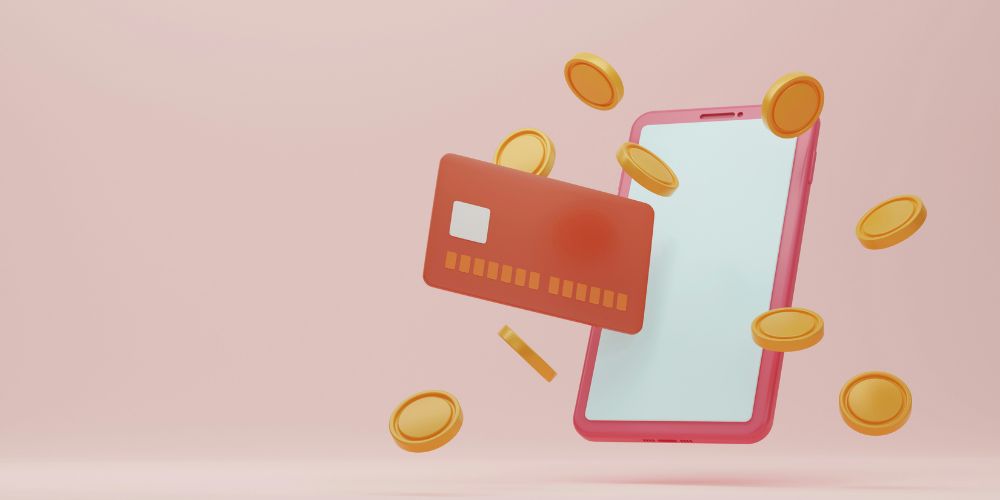In today’s fast-paced world, mobile payment systems have become an essential part of how we handle transactions. These systems allow us to make payments using our smartphones, providing convenience and security that traditional methods often lack. Understanding the different types of mobile payment systems is crucial for both consumers and businesses as they navigate this evolving landscape.
The various mobile payment solutions available today offer a range of options tailored to different needs and preferences. From mobile wallets to QR code payments, each method has its unique features and benefits. This article will explore these mobile payment methods in detail, helping you understand how they work, their advantages, and their potential drawbacks.
We will cover the most common types of mobile payment systems, including NFC payments, in-app payments, and mobile POS systems. Additionally, we will discuss the benefits of adopting mobile payment services and the challenges that come with them. By the end of this article, you will have a comprehensive understanding of the various mobile payment options and be well-equipped to choose the best mobile payment solutions for your needs.
Overview of Mobile Payment Systems
Mobile payment systems let you make payments using your smartphone instead of cash or cards. They work by linking your bank account, credit card, or a digital wallet to your mobile device, allowing you to pay quickly and securely.
The journey of mobile payment systems began in the early 2000s with the introduction of SMS payments and mobile banking apps. Over time, technology evolved, bringing in more sophisticated methods like NFC (Near Field Communication) and QR code payments. Today, many people use mobile payment solutions like Apple Pay, Google Pay, and Samsung Pay for their daily transactions.
The market for mobile payment services has grown rapidly. More people prefer payment on phone due to its convenience and security. Businesses are also adopting mobile payment options to meet customer demands and stay competitive. The rise of e-commerce and the need for contactless payments, especially during the pandemic, have further accelerated this growth.
Understanding the evolution and current trends in mobile payment systems helps us see how these technologies are shaping the future of payments. By knowing the various mobile payment methods, we can make informed choices about which mobile pay solutions work best for our needs.
NFC (Near Field Communication) Payments

NFC, or Near Field Communication, is a technology that enables two devices to communicate when they are close to each other, typically within a few centimeters. This technology is the backbone of many mobile payment systems, allowing users to make contactless payments by simply tapping their smartphones against a payment terminal.
Security is a key feature of NFC payments. These systems use advanced methods like tokenization, which replaces sensitive card information with a unique token that is useless if intercepted. Additionally, user authentication methods such as fingerprint scanning, facial recognition, or passcodes add another layer of protection. This ensures that even if your phone is lost or stolen, unauthorized users cannot make payments.
There are several benefits to using NFC payments:
- Convenience: You can leave your wallet at home and make payments with just your phone.
- Speed: Transactions are completed quickly, reducing time spent at checkout.
- Security: Enhanced security features protect your financial information better than traditional card payments.
However, NFC payments also have some limitations:
- Acceptance: Not all merchants have NFC-enabled payment terminals, limiting where you can use these mobile payment options.
- Battery dependency: Your phone needs to have enough battery power to complete a transaction.
- Device compatibility: Only smartphones with NFC capability can use these mobile payment methods.
NFC payments offer a fast, convenient, and secure way to make transactions. By understanding how these mobile payment systems work and their benefits and limitations, you can decide if they are the right mobile payment solutions for your needs.
QR Code Payments

QR code payments allow you to make transactions by scanning a quick response (QR) code with your smartphone. Here’s how it works: a merchant displays a QR code, and you use your phone’s camera or a payment app to scan it. The code contains all the necessary payment information, which your app uses to complete the transaction.
Security measures for QR code payments are robust. The payment data within the QR code is encrypted, meaning it is converted into a secure format that only authorized systems can decode. Additionally, many mobile payment services require user authentication, such as a password or biometric verification, to finalize the payment, adding an extra layer of security.
There are several pros to using QR codes for payments:
- Convenience: QR codes are easy to use. You just need your smartphone and a payment app.
- Speed: Transactions are quick, making checkout faster.
- No physical contact: Ideal for hygiene, as no physical touch is required.
- Versatility: QR codes can be used for various payments, including in-store purchases, online transactions, and even bill payments.
However, there are also cons to consider:
- Dependence on internet: Some QR code payment systems require an internet connection, which can be a limitation in areas with poor connectivity.
- Device compatibility: Not all phones can scan QR codes, especially older models without a good camera.
- Security risks: While encryption is used, there is still a risk of QR code tampering or phishing attacks where fraudulent codes are used to steal information.
QR code payments are a convenient and fast way to handle transactions using your phone. They offer several advantages, such as ease of use and hygiene, but also come with some limitations like dependency on internet access and potential security risks. Understanding these factors can help you decide if QR codes are the right mobile payment method for you.
Mobile Wallets

Mobile wallets are digital versions of physical wallets that store payment information on your smartphone. These wallets allow you to make payments without needing cash or cards. You can add your credit or debit card details to a mobile wallet app and use it to pay at stores, online, or within apps.
Mobile wallets like Apple Wallet, Google Wallet, and Samsung Wallet are popular examples. They integrate smoothly with mobile payment systems like NFC for contactless payments. Additionally, mobile wallets often support QR code payments and online transactions, making them versatile mobile payment solutions.
One significant feature of mobile wallets is their integration with other payment systems and loyalty programs. You can store loyalty cards, boarding passes, tickets, and even store-specific credit cards in your mobile wallet. This integration means you can pay and earn rewards in one seamless transaction, enhancing the shopping experience.
The advantages of using mobile wallets include:
- Convenience: You don’t need to carry multiple cards; everything is on your phone.
- Security: Mobile wallets use encryption and authentication methods like fingerprint or facial recognition to protect your information.
- Speed: Transactions are quick, reducing checkout time.
- Integration: Easily combine payment and loyalty programs for a smoother experience.
However, there are some disadvantages:
- Battery dependency: Your phone needs to be charged to make payments.
- Acceptance: Not all merchants accept mobile wallet payments, especially in smaller businesses or less tech-savvy regions.
- Device compatibility: Only smartphones with NFC capability and modern operating systems can fully utilize mobile wallets.
In summary, mobile wallets are a convenient and secure way to handle transactions, combining multiple mobile payment methods and loyalty programs into one easy-to-use app. Despite some limitations, their benefits make them a valuable tool in the world of mobile payment options.
In-App Mobile Payments

In-app mobile payments allow you to pay for goods and services directly within a mobile app. This payment method is integrated into the app, making the transaction process smooth and fast. Here’s how it works: when you are ready to make a purchase, you select the payment option within the app, choose your payment method, and confirm the payment. The app securely processes the transaction without redirecting you to a separate website or requiring you to enter your payment details each time.
Integration with mobile apps is a key feature of in-app payments. Businesses incorporate payment gateways into their apps, enabling seamless transactions. This means you can complete purchases without leaving the app, which enhances the user experience. For example, apps like Uber and Starbucks use in-app payments to allow users to pay for rides and coffee directly through their apps. The integration ensures that your payment information is stored securely, and you can make purchases with just a few taps.
There are several benefits for businesses when using in-app payments:
- Increased sales: The ease of making purchases encourages users to buy more frequently.
- Customer loyalty: Offering a convenient and secure payment method can enhance customer satisfaction and retention.
- Data insights: Businesses can gather valuable data on purchasing behaviors to tailor their marketing strategies.
For consumers, in-app payments offer:
- Convenience: You can make payments without needing to enter your card details each time.
- Speed: Transactions are quick, making it easier to complete purchases on the go.
- Security: Payment information is stored securely, reducing the risk of data breaches.
In-app mobile payments provide a convenient and secure way to complete transactions directly within mobile apps. They benefit both businesses and consumers by streamlining the payment process and enhancing the overall user experience. Understanding how these mobile payment options work can help you make the most of modern mobile payment solutions.
Mobile Point of Sale (mPOS)

A mobile point of sale (mPOS) system is a portable device that acts as a cash register. It allows businesses to accept payments anywhere, not just at a traditional checkout counter. These systems typically use smartphones or tablets equipped with a card reader and payment app.
mPOS systems differ from traditional POS systems in several ways. Traditional POS systems are fixed setups with hardware like cash registers, card readers, and receipt printers, usually located at the checkout counter. In contrast, mPOS systems are mobile and can be used anywhere within the store or even off-site, such as at a market or a customer’s home. This flexibility allows businesses to offer a more personalized and convenient shopping experience.
Benefits of using mPOS systems include:
- Portability: You can accept payments anywhere, making it ideal for mobile businesses or large retail stores where sales associates can assist customers on the floor.
- Cost-effective: mPOS systems often have lower setup and maintenance costs compared to traditional POS systems.
- Enhanced customer experience: Faster checkouts and the ability to serve customers anywhere improve overall satisfaction.
- Integration: mPOS systems can integrate with other business systems like inventory management and customer relationship management (CRM), providing a seamless operational workflow.
However, there are also challenges to consider:
- Security concerns: As with any mobile device, mPOS systems can be vulnerable to hacking and data breaches if not properly secured.
- Dependence on internet connectivity: Reliable internet access is crucial for mPOS systems to function effectively. Poor connectivity can disrupt transactions.
- Battery life: Mobile devices need to be charged regularly to ensure they can process payments throughout the day.
mPOS systems offer a flexible and cost-effective solution for businesses looking to enhance their payment options and improve customer service. While they come with certain challenges, their benefits often outweigh the drawbacks, making them a valuable addition to modern mobile payment solutions.
Peer-to-Peer (P2P) Payments
Peer-to-peer (P2P) payments allow individuals to send money directly to each other using mobile apps or online platforms. These payments bypass traditional banks, providing a quick and easy way to transfer funds. Popular P2P payment apps include Venmo, PayPal, and Zelle.
Use cases for P2P payments are varied. They are often used to split bills, pay rent, share expenses, or send gifts. For instance, if you and your friends go out to dinner, you can easily split the bill by sending money to each other through a P2P app. These payments are also useful for paying back personal loans or sharing the cost of a group gift.
Security measures are a crucial aspect of P2P payments. These systems use encryption to protect your financial information during transactions. Most apps require authentication methods such as passwords, fingerprint scans, or facial recognition to authorize payments, adding an extra layer of security. For example, Venmo and PayPal use data encryption to safeguard transactions, while Zelle integrates directly with your bank’s security systems.
Advantages of P2P payments include:
- Convenience: You can send money anytime, anywhere, using just your phone.
- Speed: Transfers are typically instant, making it easy to pay or receive money quickly.
- Low cost: Many P2P apps offer free or low-cost transfers, making them a budget-friendly option.
However, there are potential issues to consider:
- Security risks: While encryption helps, P2P payments can still be vulnerable to scams and fraud if you send money to unfamiliar recipients.
- Limited protection: Unlike credit cards, P2P payments often lack buyer protection, which can be a problem if you need to dispute a transaction.
- Dependence on technology: P2P payments require a smartphone and an internet connection, which might not be available to everyone.
P2P payments are a convenient and fast way to transfer money between individuals. They offer several advantages, such as ease of use and low costs, but also come with potential security risks and limitations. Understanding these factors can help you use P2P payment options wisely.
Sound Wave-Based Payments

Sound wave-based payments are an innovative way to transfer money using sound waves to communicate payment information between devices. Here’s how it works: a payment terminal sends a unique sound wave containing encrypted payment data to the customer’s smartphone. The phone’s microphone picks up the sound, converts it into a signal, and processes the payment.
The technology behind sound wave payments is fascinating. These payments rely on sound waves, which are used to encode payment details. The sound waves are inaudible to the human ear but can be detected by smartphones equipped with the necessary software. This technology does not require internet access, making it a practical solution in areas with poor connectivity. All it needs is a basic software installation on the phone and the payment terminal, making it accessible even on older or less advanced devices.
There are several examples and use cases of sound wave-based payments:
- In-store purchases: Retailers can use sound wave technology to accept payments without needing NFC-enabled terminals, which can be costly.
- Transportation: Public transport systems can implement this technology to allow passengers to pay for rides using their smartphones.
- Events and venues: At concerts or sports events, attendees can use sound wave payments to buy tickets, food, and merchandise quickly.
Pros of sound wave-based payments include:
- Accessibility: They work on any mobile phone with a microphone, making them suitable for regions with older devices.
- No internet required: Payments can be processed without needing an internet connection.
- Cost-effective: Merchants do not need to invest in expensive NFC-enabled terminals; they only need to install the software.
However, there are also cons:
- Limited awareness: Many people are still unaware of this technology, which can slow its adoption.
- Potential interference: Background noise or poor microphone quality can interfere with the payment process.
- Security concerns: While encrypted, sound waves can be intercepted if not properly secured, posing a risk of data breaches.
Sound wave-based payments offer a unique and accessible way to make transactions using mobile phones. They provide benefits like no internet dependency and cost-effectiveness but also face challenges such as limited awareness and potential security issues. As technology advances, sound wave payments may become a more common and reliable mobile payment method.
SMS Payments

SMS payments allow users to make transactions by sending a text message to a specific number. This method is simple and doesn’t require a smartphone, making it accessible to a wide range of users.
SMS payments are especially prevalent in developing countries where not everyone has access to smartphones or the internet. In these regions, mobile phones are common, but internet connectivity can be limited or expensive. Countries in Africa and parts of Asia have widely adopted SMS payments for various services, from buying goods to paying utility bills.
Here’s how SMS payments are processed:
- The user sends an SMS with a specific code or amount to a designated number.
- The payment service processes the request and deducts the amount from the user’s prepaid balance or adds it to their phone bill.
- The user receives a confirmation SMS, and the transaction is complete.
Advantages of SMS payments include:
- Simplicity: No need for an internet connection or a smartphone; any mobile phone can be used.
- Accessibility: Ideal for regions with limited internet access and for users who do not have smartphones.
- Quick setup: Users can easily set up and start using SMS payments without complex procedures.
However, there are also limitations:
- Security concerns: SMS payments may not be as secure as other mobile payment methods due to the risk of interception or SIM swapping.
- Limited functionality: SMS payments are generally used for small transactions and may not support more complex payment needs.
- Dependency on mobile operators: Users are reliant on their mobile network providers to support and process SMS payments.
SMS payments offer a simple and accessible way to make transactions, especially in areas with limited internet access. While they have some security and functionality limitations, their ease of use makes them a valuable mobile payment option in many parts of the world.
Benefits of Mobile Payment Systems

Mobile payment systems offer numerous benefits that enhance both user experience and business operations. Here are some key advantages:
Convenience and Speed of Transactions
Mobile payment systems provide a high level of convenience and speed. Users can make transactions with just a few taps on their smartphones, eliminating the need to carry cash or cards. This simplicity speeds up the checkout process, reducing waiting times for customers. Whether shopping online or in-store, mobile payment options streamline the purchasing process, making it quick and hassle-free.
Enhanced Security Features
Security is a significant advantage of mobile payment systems. These systems use advanced encryption and tokenization to protect users’ financial information. For example, services like Apple Pay and Google Pay replace card details with unique digital tokens, which are useless if intercepted.
Additionally, mobile payment services often require biometric authentication, such as fingerprint scans or facial recognition, adding an extra layer of security. This reduces the risk of fraud and unauthorized transactions, making mobile payment solutions safer than traditional methods.
Increased Customer Satisfaction and Retention
By offering mobile payment methods, businesses can significantly improve customer satisfaction. The ease and speed of payment on phone options enhance the shopping experience, encouraging customers to return. Additionally, mobile payment systems can integrate with loyalty programs, making it easier for customers to earn and redeem rewards. This integration fosters customer loyalty and retention, as satisfied customers are more likely to stick with businesses that offer convenient payment options.
Accessibility for Underbanked Populations
Mobile payment systems provide crucial accessibility for underbanked populations, particularly in developing regions. People without access to traditional banking services can use mobile payment methods to participate in the digital economy.
For instance, SMS payments and mobile wallets enable users to perform transactions without needing a bank account or credit card. This accessibility helps bridge the financial inclusion gap, empowering more people to engage in economic activities.
Mobile payment systems offer numerous benefits, including convenience, enhanced security, increased customer satisfaction, and greater accessibility. These advantages make them a valuable tool for both consumers and businesses, driving the adoption of mobile payment options worldwide.
Challenges and Solutions in Mobile Payments
Mobile payment systems are convenient, but they come with several challenges. Here are the main issues and their solutions:
Interoperability Issues
Different mobile payment systems often don’t work well together. For example, a user with Apple Pay might not be able to send money to someone using Google Pay. This lack of compatibility can frustrate users and limit the effectiveness of mobile payment options.
- Solution: To address this, companies can develop common standards and open APIs that allow different systems to communicate with each other. This makes it easier for users to transfer funds between various mobile payment methods and enhances the overall user experience.
Security Threats and Fraud
Security is a major concern with mobile payment systems. Threats like hacking, phishing, and malware can put users’ financial information at risk. Even with advanced security measures, the risk of fraud remains a significant issue.
- Solution: Strengthening security features is crucial. This includes using multi-factor authentication, regular software updates, and educating users about safe practices. Payment systems should also continuously monitor transactions for any suspicious activities to prevent fraud.
Network and Connectivity Problems
Reliable internet access is essential for many mobile payment methods. Poor network conditions can disrupt transactions, leading to frustration for both customers and merchants. This is particularly challenging in areas with unstable internet connections.
- Solution: One way to tackle this problem is by designing payment systems that can work offline. These systems can store transaction data securely and process it once the connection is restored. Additionally, improving network infrastructure and providing alternative payment methods like SMS payments can help mitigate connectivity issues.
Customer Education and Merchant Acceptance
Adoption of mobile payment systems can be slow due to a lack of understanding and trust among consumers and merchants. Many people are unfamiliar with how these systems work or are concerned about security risks.
- Solution: Providing education and support is essential. Tutorials, customer service hotlines, and in-person assistance can help users get comfortable with mobile payment solutions. For merchants, offering incentives like lower transaction fees or promotional support can encourage them to accept mobile payments.
While mobile payment systems face challenges like interoperability issues, security threats, network problems, and adoption hurdles, addressing these with common standards, robust security measures, improved infrastructure, and education can help maximize their potential and enhance user trust and convenience.
Future Trends in Mobile Payment Systems

Mobile payment systems are rapidly evolving, with several exciting trends on the horizon. Here are some key future trends to watch:
Growth of Mobile Wallet Users and Market Expansion
The number of mobile wallet users is growing rapidly. More people are adopting mobile payment methods like Apple Pay, Google Pay, and Samsung Pay for their convenience and security. This trend is expected to continue, with the market expanding as more businesses accept these mobile payment solutions. As a result, mobile payments will become even more commonplace, driving further innovation and adoption.
Integration with Social Media Platforms
Social media platforms are increasingly integrating mobile payment options. This allows users to make purchases directly within apps like Facebook, Instagram, and WhatsApp. For example, users can buy products, send money to friends, or donate to causes without leaving the app. This integration makes transactions more seamless and encourages more frequent use of mobile payment systems.
Advances in Biometric Authentication
Biometric authentication is becoming more sophisticated, enhancing the security of mobile payments. Technologies like fingerprint scanning, facial recognition, and even voice recognition are being used to authenticate transactions. These methods provide an extra layer of security, making it harder for unauthorized users to access accounts. As these technologies advance, they will make mobile payments even more secure and user-friendly.
Innovations in Cross-Border Payments
Cross-border payments are also seeing significant innovations. Traditional methods of sending money internationally can be slow and expensive. However, new mobile payment solutions are making it easier and cheaper to transfer money across borders. Digital wallets and blockchain technology are streamlining these transactions, reducing costs, and increasing speed. This is particularly beneficial for businesses and individuals who need to send money internationally frequently.
The future of mobile payment systems looks promising, with growing user adoption, integration with social media, advanced security features, and improved cross-border payment options. These trends will continue to shape the way we make payments, offering more convenience, security, and efficiency.
Conclusion
In this article, we explored various mobile payment systems, including NFC payments, QR code payments, mobile wallets, in-app payments, mPOS systems, P2P payments, sound wave-based payments, and SMS payments. Each mobile payment method offers unique features and benefits, making transactions more convenient and secure.
Staying updated with trends in mobile payment solutions is crucial. As technology evolves, we see increased adoption of mobile wallets, integration with social media, advances in biometric authentication, and innovations in cross-border payments. Keeping up with these trends helps businesses and consumers make informed decisions about their mobile payment options.
The future of mobile payments looks promising, with continuous improvements in convenience, security, and accessibility. Embracing these advancements can enhance the way we handle transactions, making payments faster, safer, and more efficient. As we move forward, mobile payment systems will play an even more significant role in our daily lives, transforming how we interact with money and commerce.
FAQs: Different Types of Mobile Payment Systems
How secure are mobile payment systems?
Mobile payment systems are generally very secure. They use advanced security measures such as encryption and tokenization to protect your financial information. For example, services like Apple Pay and Google Pay replace your card details with unique digital tokens that are useless if intercepted.
Additionally, mobile payment methods often require biometric authentication, like fingerprint scans or facial recognition, adding an extra layer of security. These features make mobile payments safer than traditional card payments, as they reduce the risk of fraud and unauthorized access.
Can mobile payments be used internationally?
Yes, mobile payments can be used internationally. Many mobile payment systems like PayPal, Google Pay, and Apple Pay support international transactions. They allow users to make purchases and send money across borders easily. However, it’s essential to check if the specific mobile payment method is accepted in the country you’re visiting or dealing with.
Additionally, some fees might apply for international transactions, so it’s a good idea to review the terms and conditions of the mobile payment service you’re using.
Author

Emily brings a wealth of financial experience and analytical skills to the table. She specializes in helping businesses optimize their merchant services costs and identify opportunities for improvement. When she's not working, Emily enjoys yoga, reading, and volunteering for animal shelters.
View all posts





